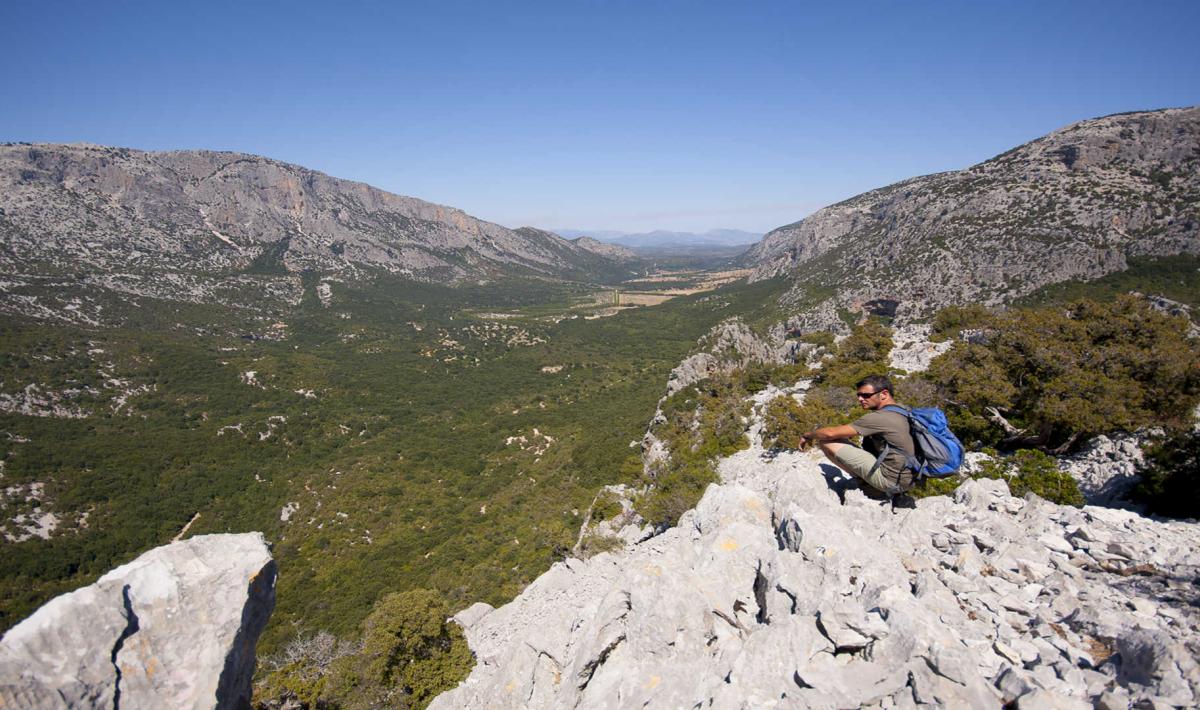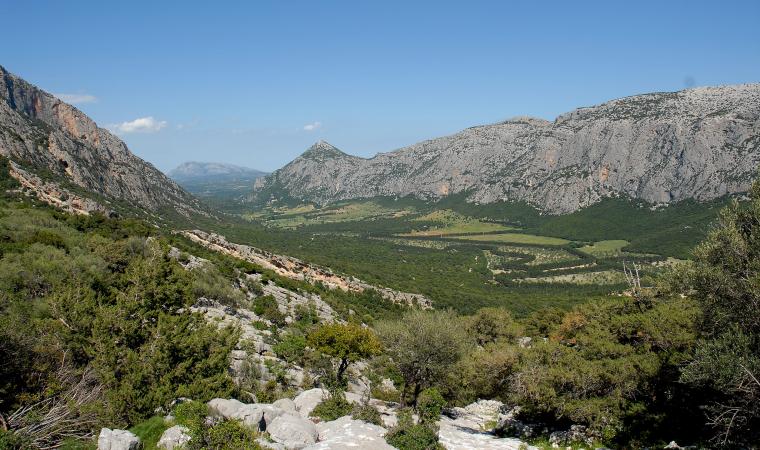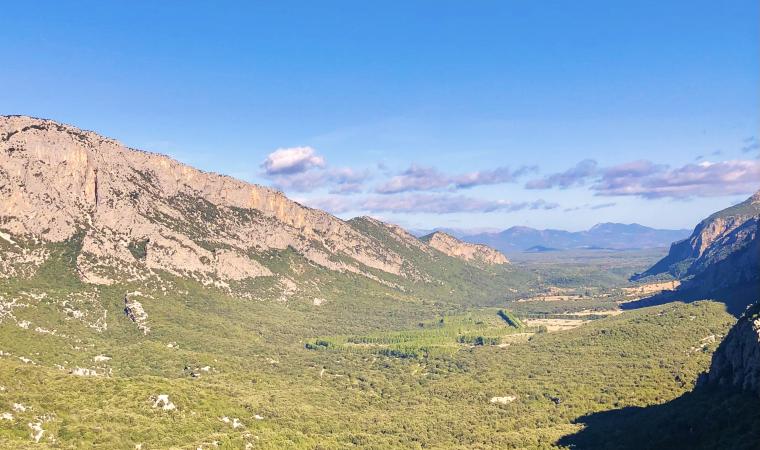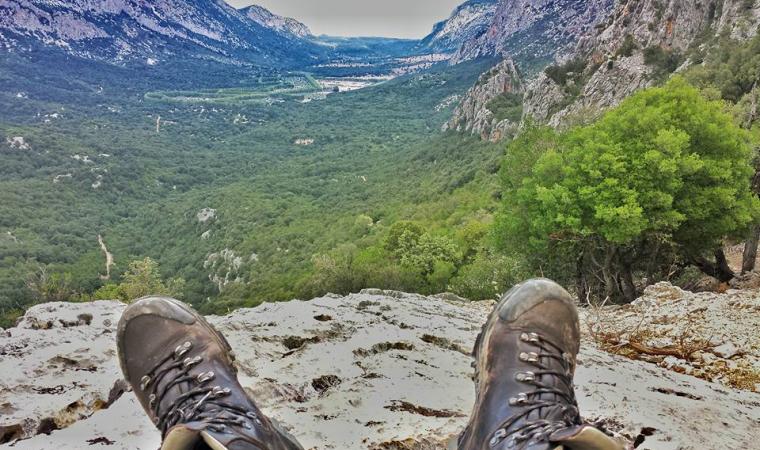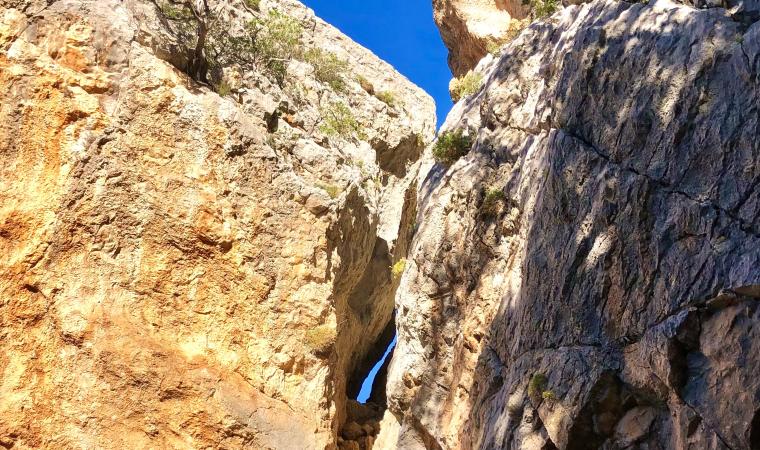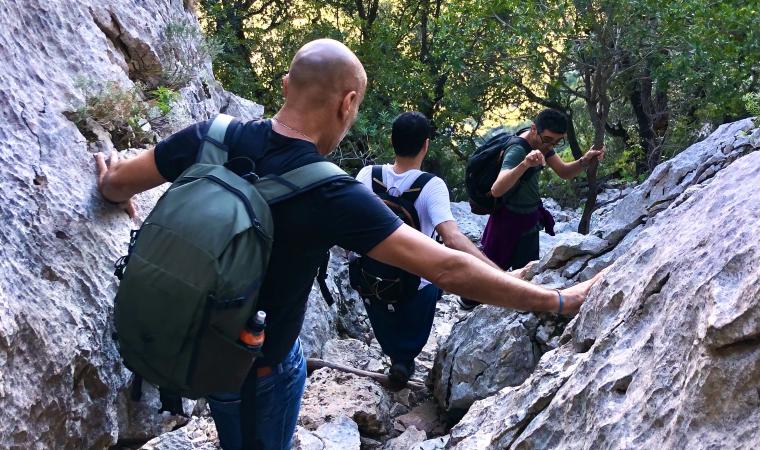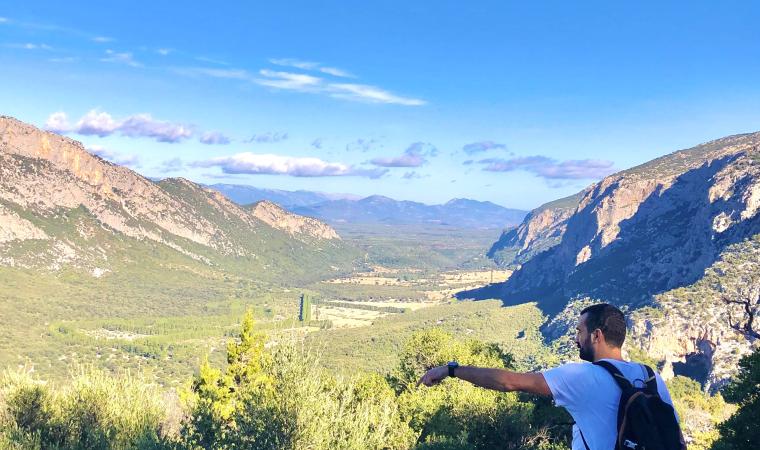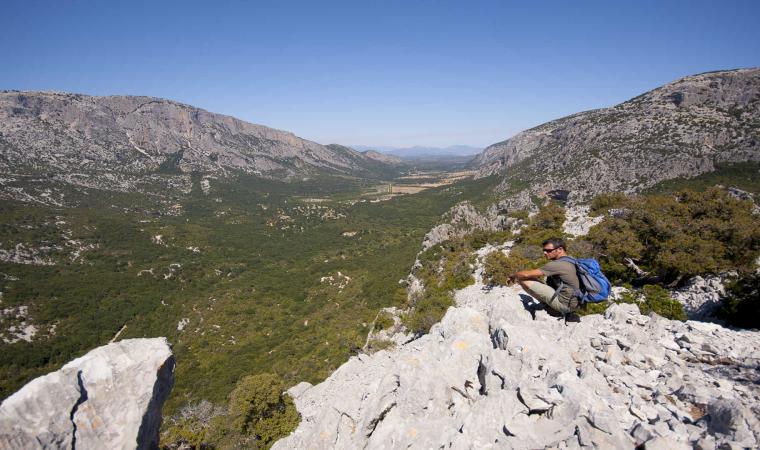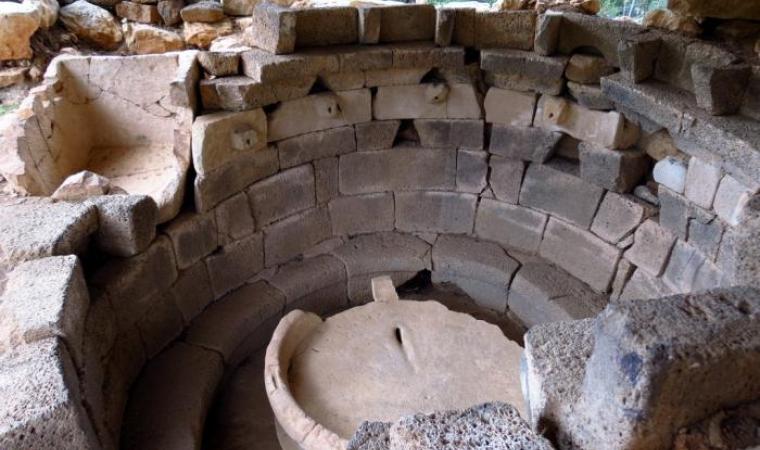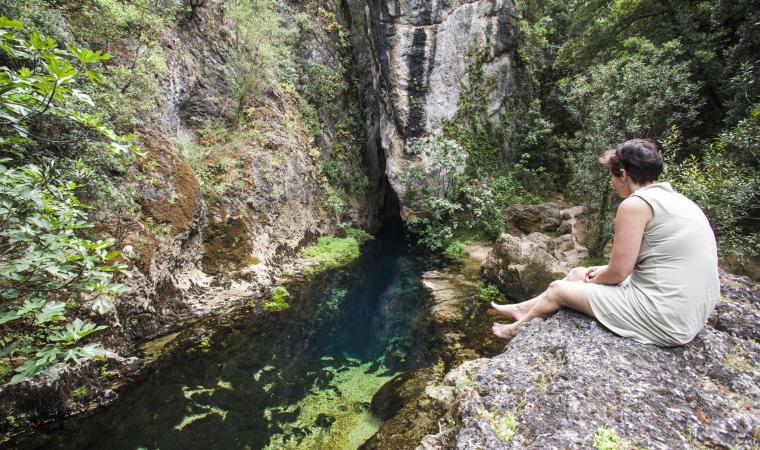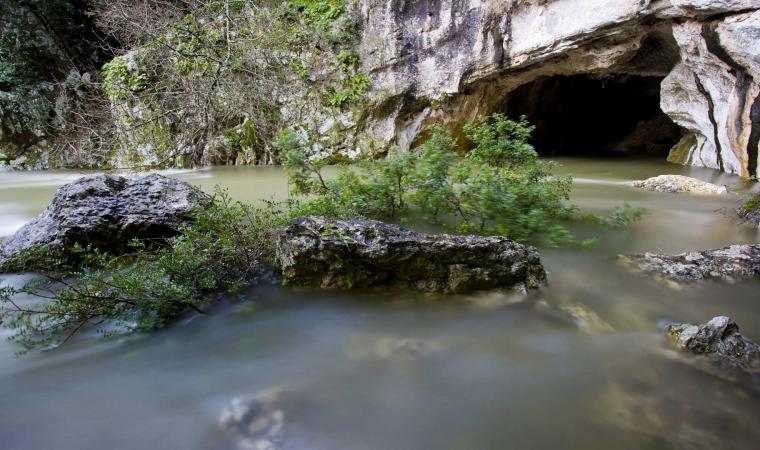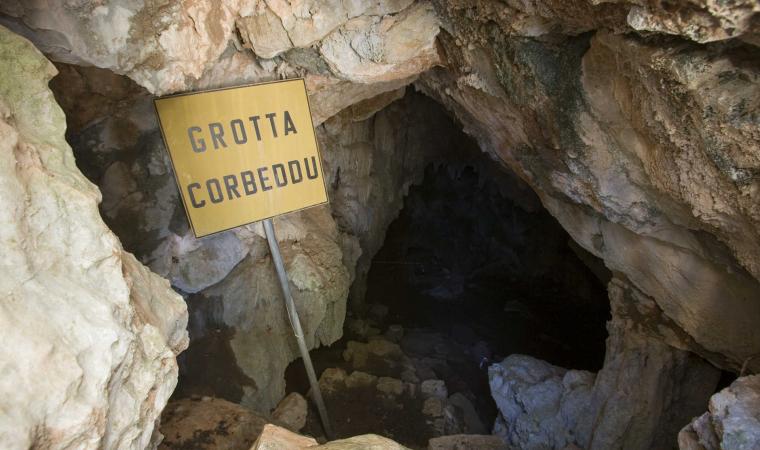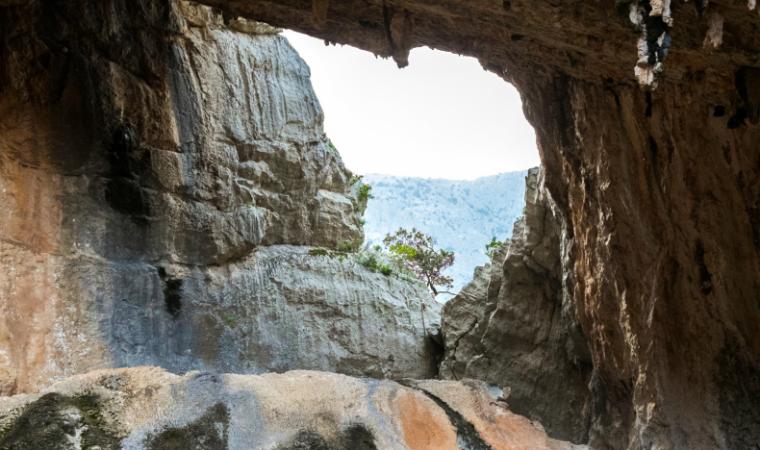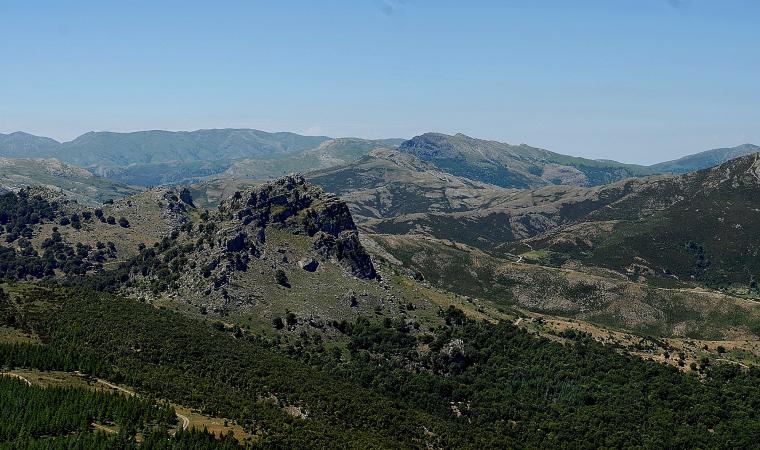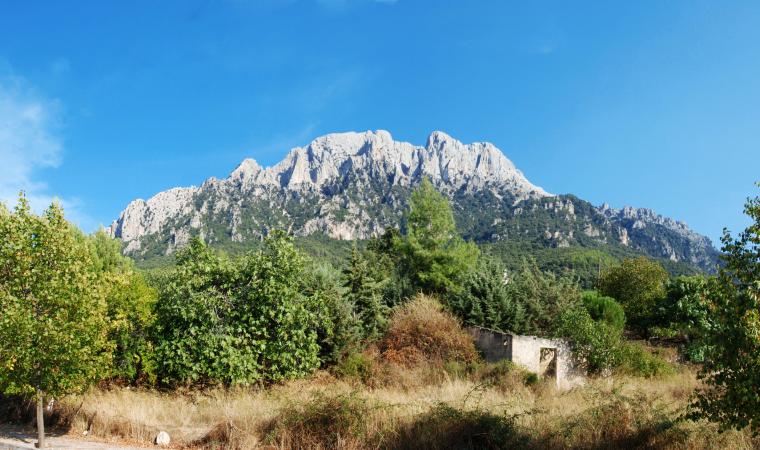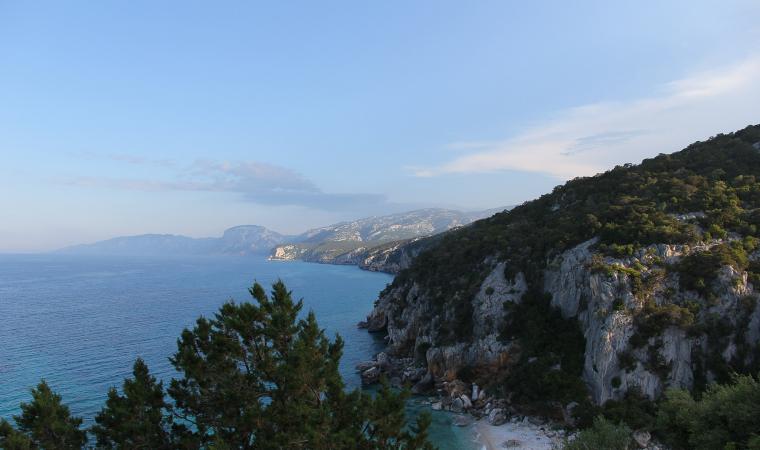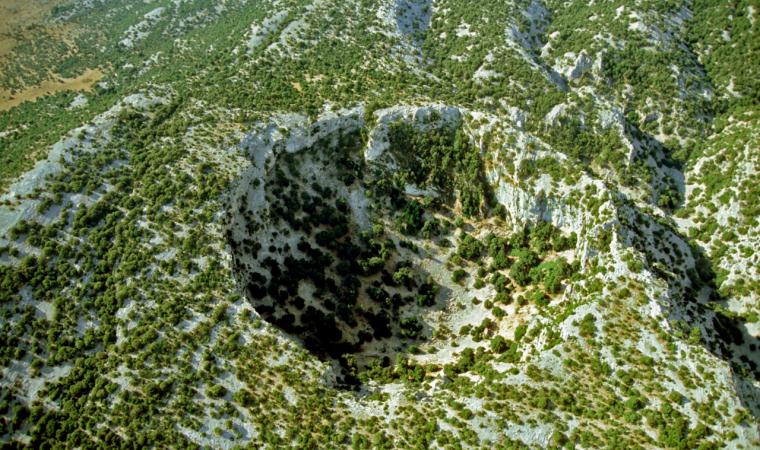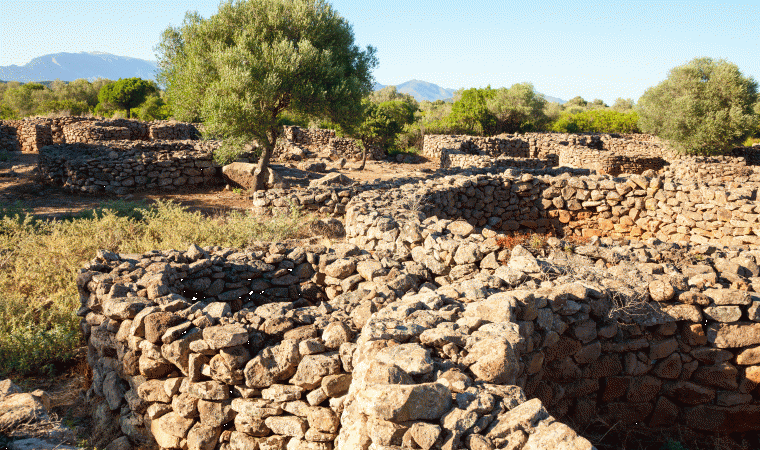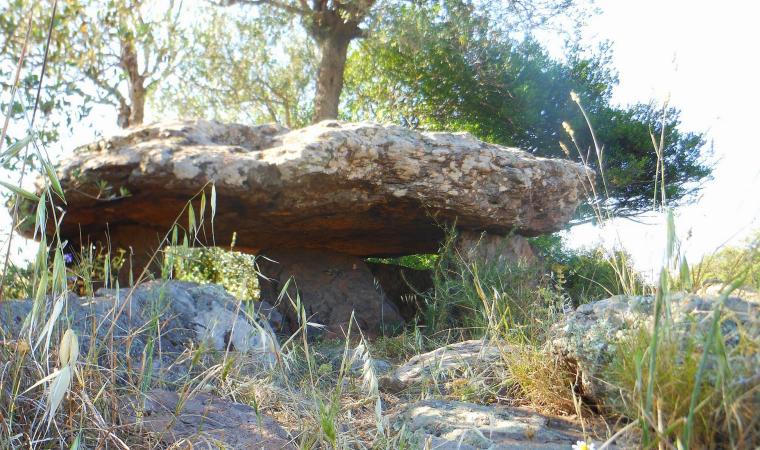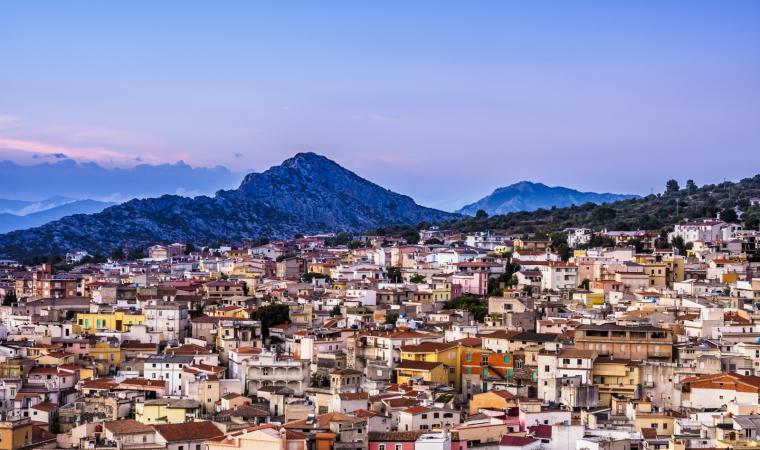The most accessible ‘gateway’ to the rugged Supramonte elevations, famous for its intricate pathways, once known only to shepherds and coal merchants, now trekking trails that lead to natural and archaeological treasures. The valley of Lanaitto (also spelled Lanaitho or Lanaittu) is in a setting of spellbinding scenery in the territories of Oliena and Dorgali, amidst imposing limestone ridges that have generated sinkholes, canyons, aiguilles and caves. It would be a lunar landscape if it were not covered in lush woodland in a thousand shades of green: holm oaks, terebinths, maples, olive trees and centuries-old junipers embrace winding dirt paths. The silence is only broken by the rustling of leaves. In amidst the natural monuments, prehistoric sites and pinnettos - shepherds’ retreats that have become shelters for trekkers - it is easy to spot mouflons or see eagles flying. Bring your hiking shoes, backpack and water bottle and don't forget your smartphone and binoculars.
Starting from Oliena, after crossing the bridge over Lake Cedrino, the spring of su Gologone is the first spectacular stop on the excursion to Lanaitto, just before the entrance to the valley: crystal clear waters gush from a deep rift, carved for kilometres out of the white rocks, over thousands of years. All around, the shade of the eucalyptus, oleander and willow trees is perfect for picnics and relaxing. After leaving this idyllic place and parking your car next to a shelter, you will walk down to a green basin guarded by walls known to climbers: in front of you is the limestone backdrop of Monte Corrasi, behind which there are the basalt columns of the Gollei plateau, a ‘Gothic cathedral’ created by nature. A tree-lined path leads to the entrances of the caves of sa Oche and su Bentu, which are connected to each other and among the longest in Europe, true havens for speleologists. Inside them, karst phenomena have created tunnels that are kilometres long, rooms that are up to one hundred metres high, decorated with stalactites and stalagmites, floors covered with sharp crystals, underground lakes and sandy beaches. Sa Oche means ‘the voice’ and, in reality, a roar resounds from within, during heavy rains, when the water flows out, flooding the valley. The same impetuous underground torrent has carved su Bentu (the wind), which has been the ‘stage’ of survival courses for astronauts several times. Inside, nature has created a fairy tale: there are concretions that look like prehistoric animals, eccentric ones extending in every direction, limestone curtains of all colours, basins of extraordinarily transparent water.
At Lanaitto, the caves are witnesses of the first homo sapiens on the Island. In the grotta Corbeddu, just south of the other two caves, human bones dating back to between seven and thirteen thousand years ago were found, as well as traces of animals that are now extinct. The cavern, habitat of unique micro-organisms and embellished by stalactites and stalagmites, was the secret refuge of the gentleman bandit Giovanni Corbeddu Salis while he was on the run (1880-1898). It is said that this ‘king of the scrub’ stole from the rich to give to the needy and had set up a ‘court’ inside the cave, where suspects were only judged with clear evidence of their guilt. After leaving the cave, walking along continuous uphill and downhill stretches leading to the valley floor, you will reach the late-Nuragic village of sa Sedda ‘e sos Carros, used as a parking area in the past for wagons transporting timber. Its huts surround a sacred well made of light limestone and dark basalt rocks, unique in the Mediterranean. The water gushed from nine mouflon heads carved in the stone and collected in a circular stepped pool, possibly used for rituals.
The last stage of the tour of the valley - to which a whole day should be dedicated - is Monte Tiscali. A Nuragic village hides on its summit, which can be accessed via a very narrow crevice in the rock, at the bottom of a deep sinkhole, and is made up of circular huts from the Bronze Age and rectangular ones perhaps readapted in Roman times. A trekking excursion in Tiscali is a must: you will tackle challenging routes both passing from the western side of Oliano and from the eastern side of Dorgali. Two hours for the climb, one hour for the visit and an hour and a half for the descent. The paths run alongside the mountain and the higher you climb, the more the view opens up over the valley.
From Oliena, a village famous for artisan crafts, olive oil and Nepente wine, other evocative itineraries reach the top of Mount Maccione, Scala Pradu, a ‘terrace’ looking out at the sharp outlines of the peaks of Mount Corrasi, and su Campu de Orgoi, a mountain plateau, where the view extends all the way to the Supramonte of Orgosolo, Urzulei and Baunei.

